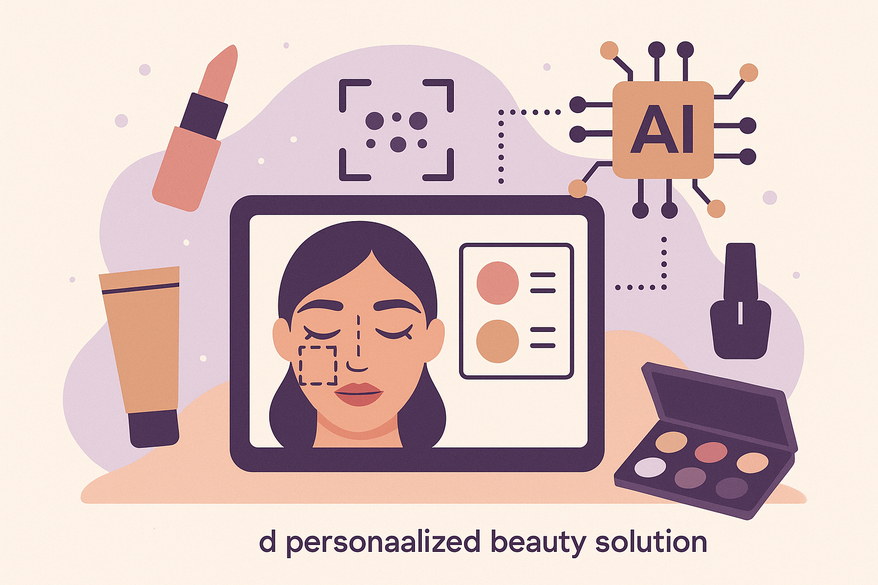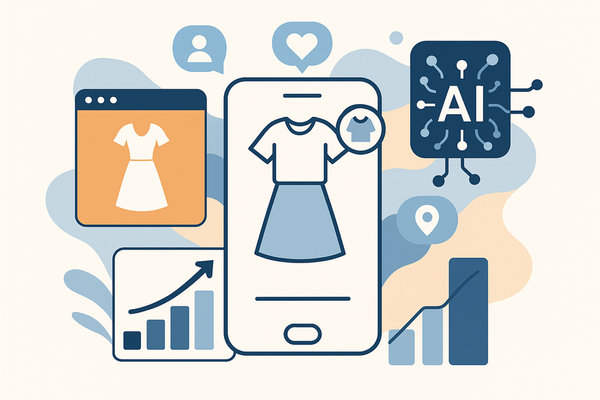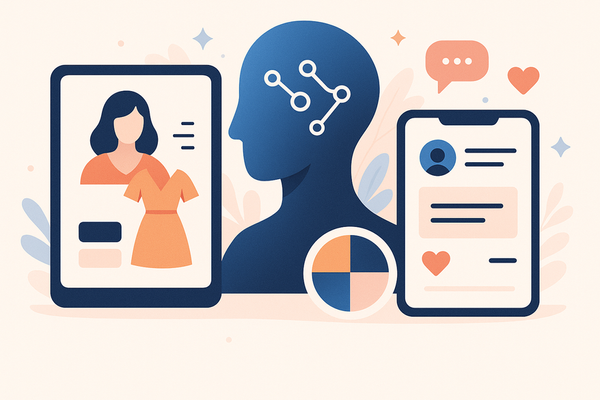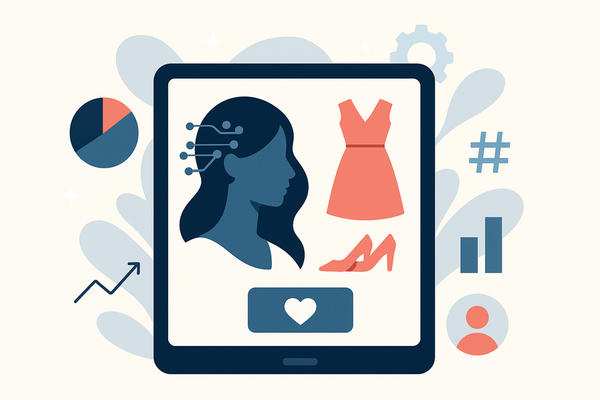Personalized Makeup Recommendations AI: A Complete Guide
Discover the power of personalized makeup recommendations AI, leveraging machine learning and computer vision to provide unique, tailored beauty solutions.

Estimated reading time: 8 minutes
Key Takeaways
- AI combines machine learning, computer vision, and data analysis to deliver custom beauty solutions.
- Personalized recommendations reduce guesswork, boost accuracy, and enhance consumer satisfaction.
- Beauty brands leverage AI for hyper-personalized marketing and innovative digital tools.
- Challenges include algorithmic bias, data privacy, and the need for transparent, ethical models.
- Emerging trends point to biosensor integration, omnichannel experiences, and continuous AI learning.
Table of Contents
- Introduction
- Fundamentals of AI in Personalized Makeup
- How Data Collection and Analysis Work
- Benefits for Consumers
- Impact on the Beauty Industry
- Challenges and Considerations
- Future Trends and Developments
- Conclusion & Call to Action
Personalized makeup recommendations AI uses artificial intelligence technologies—such as machine learning, computer vision, and data analysis—to analyze individual user data (skin tone, facial features, preferences) and suggest tailored beauty products and routines. Today, 70% of consumers report frustration with ill-fitting makeup shades, making AI-driven product matching essential for confidence and convenience (how AI is transforming beauty).
As beauty brands vie for customer loyalty, understanding how AI personalizes product suggestions can help shoppers and professionals alike. In this guide, we’ll cover:
- Fundamentals of AI in personalized makeup
- Data collection and analysis workflows
- Benefits for consumers
- Industry impact
- Challenges and considerations
- Future trends and developments
Whether you’re a makeup artist, tech enthusiast, or everyday shopper, this deep dive offers clear, actionable insights into today’s and tomorrow’s beauty-tech landscape.
Fundamentals of AI in Personalized Makeup
Defining Core Technologies
- Machine Learning
– Learns from facial images, product ratings, and user feedback to predict best matches.
– Builds models that link skin undertones and textures to specific formulations.
– Source: PMC article - Computer Vision
– Uses image-analysis tools to detect skin tone, texture, and facial landmarks in selfies.
– Enables real-time shade matching through live camera feeds or photos.
– Source: PMC article - Data Analysis
– Aggregates questionnaire answers, purchase history, climate data, and trend reports.
– Refines suggestions by correlating environmental factors (UV index, humidity) with product performance.
– Source: PMC article
How AI Integrates These Technologies
Machine learning, computer vision, and data analysis work in concert under the umbrella of personalized makeup recommendations AI. By combining pattern recognition with real-time image processing and contextual data, AI systems continuously learn and improve accuracy.
Data Collection Workflows
- Manual Inputs
– Online questionnaires on skin type, preferred look (matte vs. dewy), sensitivity, and allergies. - Automated Inputs
– User-uploaded selfies analyzed for undertone, pigmentation, and blemish patterns.
– Live video streams for dynamic lighting adjustments. - Environmental & Behavioral Data
– Local weather, season, and UV index inform product formulas and matching.
– Purchase history and browsing habits tailor future suggestions.
– Source: how AI is transforming beauty
How Data Collection and Analysis Work
Step-by-Step Data Pipeline
1. User Onboarding
– Begins with a selfie upload or profile form.
2. Feature Extraction
– Algorithms identify skin tone (fair, medium, deep), undertone (cool, warm, neutral), and facial landmarks.
3. Shade Matching via Machine Learning
– Extracted features are cross-referenced with swatches, formulas, and performance metrics to rank top candidates.
4. Contextual Refinement
– Integrates weather conditions, seasonal color trends, and the user’s past preferences for final recommendations.
Proposed visual: A flowchart illustrating each stage—from image capture to AI-driven product output—to clarify the end-to-end pipeline.
Benefits for Consumers
Enhanced Shopping Experience
- AI filters thousands of products to the top five matches in seconds.
- Eliminates guesswork and costly trial-and-error visits to stores.
Source: how AI is transforming beauty
Increased Accuracy
- L’Oréal SkinConsult AI reports 95% shade-matching accuracy versus 70% with manual methods.
- Real-world tests show fewer returns and higher satisfaction with virtual matches.
Source: PMC article
Time Savings & Convenience
- Virtual consultations and AR try-ons available 24/7.
- No in-store appointments needed; recommendations delivered via mobile or web apps.
These virtual try-ons reduce returns and enhance creativity (learn more in the AI makeup transformation revolution).
Improved Satisfaction & Loyalty
- Brands see a 30% lift in repeat purchases when consumers receive tailored recommendations.
- Personalized routines build trust and boost lifetime customer value.
Advanced AI makeup analysis tools provide in-depth complexion assessments to fine-tune product suggestions (advanced makeup analysis tool).
Impact on the Beauty Industry
Hyper-Personalized Marketing Strategies
• AI segments audiences by predicted skin needs, life stage, and seasonality.
• Brands send targeted promotions—e.g., hydrating serums for humid climates—boosting engagement.
Source: how AI and data are redefining personalized experiences
Case Study: L’Oréal’s SkinConsult AI & Perso Device
• Deep-learning models trained on 10+ million images create custom-mixed foundations and lipcolors.
• Results: 25% reduction in product returns, 15-point uplift in Net Promoter Score.
Source: PMC article
Rise of Digital Tools & Apps
• Sephora Virtual Artist and Shopify’s AR try-on plug-ins let users sample looks instantly.
• Back-end AI engines sync with CRM data for continuous feedback loops.
• Brands use in-app behavior to refine marketing and product development.
Sources: AI beauty, how AI is transforming beauty
Challenges and Considerations
Algorithmic Bias & Inclusivity
• Underrepresentation of darker or non-Western skin tones in training datasets can skew results.
• Mitigation: sourcing diverse image libraries, bias-detection audits, and partnering with inclusivity experts.
Source: PMC article
Privacy & Data Security
• Biometric and facial data require strict GDPR/CCPA compliance.
• Best practices: transparent consent flows, end-to-end encryption, and anonymization of personally identifiable information.
Source: PMC article
Technical & Ethical Considerations
• Transparency: explainable AI models help users understand why recommendations are made.
• Ethics boards: many brands work with external panels to ensure fairness and avoid reinforcing stereotypes.
Future Trends and Developments
Emerging Technologies
• Biometric signals such as hydration sensors and pH monitors for real-time skin condition tracking.
• Lifestyle integration via wearables sharing data on stress, sleep, and diet to fine-tune suggestions.
Source: the future of beauty AI’s role in revolutionizing makeup
Greater Integration Across Channels
• Omnichannel experiences tie social commerce, in-store smart mirrors, and e-commerce platforms for seamless service.
• Startups like ModiFace are building roadmaps to unify data across retail and digital touchpoints.
Continuous Learning & Feedback Loops
• Each interaction—try-on, purchase, review—feeds back into the model, raising shade-match accuracy by up to 20% over six months.
Source: PMC article
Conclusion & Call to Action
Personalized makeup recommendations AI combines machine learning, computer vision, and advanced data analysis to create precise, context-aware beauty solutions. Consumers benefit from faster shade matching, higher accuracy, and greater satisfaction. Brands leverage hyper-personalized marketing, digital tools, and deep-learning-driven devices to innovate responsibly. Despite challenges such as bias mitigation and data privacy, ongoing developments in biosensors and omnichannel integration signal a bright future for AI-driven beauty.
To take your beauty-tech exploration further, experience Maxx Report, an AI-powered app that delivers comprehensive looksmaxx and makeover insights at your fingertips.
FAQ
What is personalized makeup recommendation AI?
It’s a technology that uses AI—machine learning, computer vision, and data analysis—to suggest tailored beauty products based on an individual’s unique skin and preference data.
How accurate are AI shade matches?
Leading systems report up to 95% accuracy compared to 70% with manual methods, significantly reducing product returns and enhancing satisfaction.
Is my personal and facial data safe?
Reputable platforms follow GDPR/CCPA guidelines, employ end-to-end encryption, and anonymize identifiable information to protect user privacy.
Can AI recommendations replace professional makeup artists?
AI provides highly personalized starting points and convenience, but many consumers still value the artistic skill and creativity of professional makeup artists.
What’s next for AI in makeup?
Future advancements include integrating biometric sensors, leveraging omnichannel data, and employing continuous learning to refine recommendations in real time.





